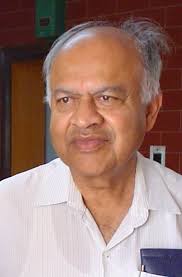Jayant Narlikar:

Eminent astrophysicist, science communicator, and Padma Vibhushan awardee Dr. Jayant Vishnu Narlikar passed away in Pune recently.
- He was one of India’s most distinguished astrophysicists and a global name in theoretical cosmology.
- He was born on July 19, 1938, in Kolhapur, Maharashtra.
- He earned his B.Sc degree from the Banaras Hindu University (BHU) in 1957.
- He later went on to Cambridge University for higher studies, becoming a Wrangler and earning the Tyson Medal in the Mathematical Tripos — a mark of top academic distinction.
- After returning to India, Narlikar joined the Tata Institute of Fundamental Research (TIFR) in 1972 and led the Theoretical Astrophysics Group until 1989, during which time the group gained international recognition.
- In 1988, the University Grants Commission (UGC) entrusted him with the task of establishing the Inter-University Centre for Astronomy and Astrophysics (IUCAA) inside the Savitribai Phule Pune University campus. As its founding director, he led IUCAA until his retirement in 2003.
- He served as President of the Cosmology Commission of the International Astronomical Union from 1994 to 1997.
- He is best known for co-developing the Hoyle–Narlikar theory of gravity.
- From 1999 to 2003, he led a space research experiment to collect microorganisms from the upper atmosphere (up to 41 km).
- He authored numerous popular science books and articles, and appeared frequently on radio and television to explain complex scientific ideas in simple terms.
- In 1996, UNESCO honoured him with the Kalinga Award for science popularisation.
- In 2004, he received the Padma Vibhushan, India’s second-highest civilian award.
- In 2014, the Sahitya Akademi honoured his Marathi autobiography with its highest prize for regional literature.
- He was a Fellow of all three national science academies of India, the Royal Astronomical Society of London, and the Third World Academy of Sciences.
- Jayant Narlikar is best known for co-developing the Hoyle–Narlikar theory of gravity—an alternative to Einstein’s general relativity and for championing the steady-state theory of the universe, a bold counterpoint to the widely accepted Big Bang model.
- The Hoyle–Narlikar theory offered a formulation of gravitation that synthesised Einstein’s general relativity with Mach’s principle, proposing that the inertial mass of a particle depends on the distribution of mass across the universe—an idea that challenged conventional big bang cosmology and continues to stimulate scientific debate.




